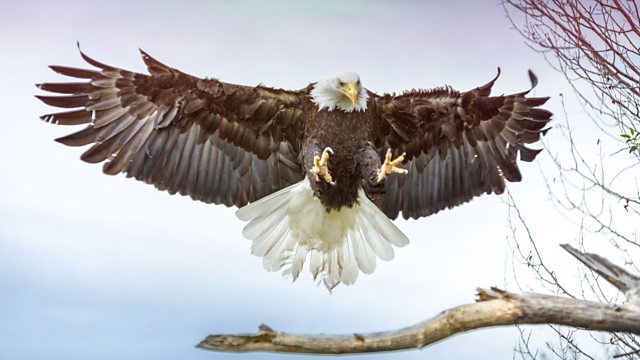The Wonder of Animals – Birds of Prey: Chris Packham explores what enables birds of prey to rule the aerial roost. Their ability to dominate their fellow birds in terms of strength, manoeuvrability and phenomenal speed is down to a combination of anatomical and physiological adaptations.
Chris explains the internal workings of the bald eagle’s ratchet talons and how sharp eyes and a gyroscopic head enable the goshawk to keep its sight firmly fixed on both its prey and its surroundings as it tears through the undergrowth. New research reveals how pop-up feathers on the peregrine falcon’s back act like pits on a golf ball to reduce drag – allowing it to reach 220mph.
The Wonder of Animals – Birds of Prey
Birds of prey or predatory birds, also known as raptors, are hypercarnivorous bird species that actively hunt and feed on other vertebrates (mainly mammals, reptiles and other smaller birds). In addition to speed and strength, these predators have keen eyesight for detecting prey from a distance or during flight, strong feet with sharp talons for grasping or killing prey, and powerful, curved beaks for tearing off flesh. Although predatory birds primarily hunt live prey, many species (such as fish eagles, vultures and condors) also scavenge and eat carrion.
Although the term “bird of prey” could theoretically be taken to include all birds that actively hunt and eat other animals, ornithologists typically use the narrower definition followed in this page, excluding piscivorous predators such as storks, herons, gulls, skuas, penguins and kingfishers nor primarily insectivorous birds such as songbirds or birds like shrikes. Some extinct predatory birds had talons similar to those of modern birds of prey, including mousebird relatives (Sandcoleidae), Messelasturidae and some Enantiornithes, indicating possible convergent evolution.
Birds of prey have been historically persecuted both directly and indirectly. In the Danish Faeroe Islands, there were rewards Naebbetold (by royal decree from 1741) given in return for the bills of birds of prey shown by hunters. In Britain, kites and buzzards were seen as destroyers of game and killed, for instance in 1684-5 alone as many as 100 kites were killed.
Rewards for their killing were also in force in the Netherlands from 1756. From 1705 to 1800, it has been estimated that 624087 birds of prey were killed in a part of Germany that included Hannover, Luneburg, Lauenburg and Bremen with 14125 claws deposited just in 1796–7. Many species also develop lead poisoning after accidental consumption of lead shot when feeding on animals that had been shot by hunters. Lead pellets from direct shooting that the birds have escaped from also cause reduced fitness and premature deaths.




